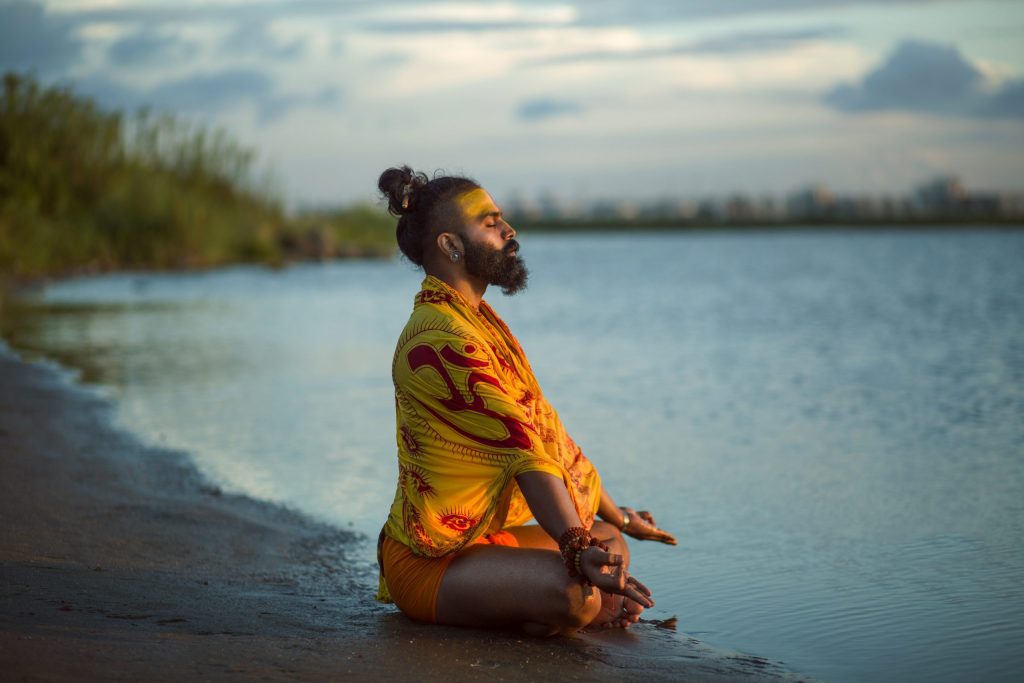The History and Origins of Yoga: Tracing its Evolution Over Time
02 SEP 2022
The History and Origins of Yoga: Tracing its Evolution Over Time
Have you ever wondered about the origins of yoga and its evolution over time? This blog post delves into the history and roots of this ancient practice, which originated in India and has since spread across the globe. The term “yoga” is derived from the Sanskrit word “yuj,” meaning “to yoke” or “unite.” Its primary objective is to bring about a harmonious balance between the body, mind, and spirit, while also seeking a connection with the divine or one’s true self. The practice of yoga has a fascinating and diverse history, spanning many centuries and cultures.
Yoga has been practiced for thousands of years, and its roots can be traced back to ancient India. The god Shiva is said to have taught yoga to his wife Parvati, who then shared it with humanity. The earliest evidence of yoga can be found in the Indus Valley Civilization, which existed between 3300-1900 BCE. Archaeologists have discovered seals and statues from this time that depict yogic postures and symbols.
For many years, it was thought that yoga began around 500 BCE, during the time of Buddha and Mahavira. However, in 1921, the Rig Veda, the oldest sacred text of Hinduism, was discovered, which dates back to 1500 BCE. Within this text, hymns and rituals mention yoga as a means of attaining enlightenment.
During the classical period of yoga, two texts became influential in shaping the philosophy of yoga: the Upanishads and the Bhagavad Gita. The Upanishads offer a collection of philosophical teachings that delve into the nature of reality and the self, introducing the concepts of Brahman, the supreme reality, and Atman, the individual soul. Additionally, the Upanishads consider yoga as a means of realizing the identity of Brahman and Atman.
On the other hand, the Bhagavad Gita is an epic poem that narrates a dialogue between Krishna, an avatar of Vishnu, and Arjuna, a warrior prince. This text introduces three paths of yoga: karma yoga (the yoga of action), bhakti yoga (the yoga of devotion), and jnana yoga (the yoga of knowledge). The Bhagavad Gita also emphasizes the importance of dharma, or one’s duty and purpose in life.
The most influential text on classical yoga is the Yoga Sutras of Patanjali, which was composed around 200 CE. The Yoga Sutras systematize the philosophy and practice of yoga into 196 aphorisms or sutras. The Yoga Sutras define yoga as “the cessation of the fluctuations of the mind” (YS 1.2) and outline an eightfold path or ashtanga to achieve this state. The eight limbs are:
- Yama: ethical restraints
- Niyama: personal observances
- Asana: physical postures
- Pranayama: breath control
- Pratyahara: withdrawal of senses
- Dharana: concentration
- Dhyana: meditation
- Samadhi: absorption or bliss
The Post-Classical Yoga The post-classical period of yoga is characterized by the development of various schools and styles of yoga that emphasize different aspects and techniques. Some of the notable schools and styles are:
-
Hatha Yoga: a school of yoga that focuses on physical purification and mastery through asanas, pranayama, mudras (gestures), bandhas (locks), and kriyas (cleansing techniques). Hatha Yoga also introduces the concept of kundalini, or the latent energy at the base of the spine that can be awakened through yogic practices.
-
Tantra Yoga: a school of yoga that uses rituals, mantras (chants), yantras (diagrams), mandalas (symbols), and visualization to harness the power of shakti, or the feminine energy that pervades the universe. Tantra Yoga also teaches that everything in existence is an expression of divine consciousness or shiva-shakti.
-
Bhakti Yoga: a school of yoga that emphasizes devotion and love for a personal deity or guru as a way of attaining union with God. Bhakti Yoga also involves singing
As you can see, practicing yoga daily can benefit you in many ways. It can help you improve your physical, mental, emotional, and spiritual health, and bring more harmony and happiness to your life. So why not give it a try? Start with a simple routine that suits your level and schedule, and see how it changes you for the better.
Yoga is more than just a physical practice; it is a spiritual practice as well. The practice of yoga encourages self-reflection and introspection, which can help to improve self-awareness and self-esteem. Yoga is a practice of self-love, and it teaches us to treat our bodies with kindness and compassion.
Yoga also encourages us to connect with something greater than ourselves. Whether it’s through chanting, meditation, or other spiritual practices, yoga helps us to tap into our spiritual nature and connect with the world around us.
In conclusion, the benefits of practicing yoga daily are vast and varied. It has a positive impact on the mind, body, and soul. Yoga is an excellent way to improve overall health and well-being and can be practiced by anyone, regardless of age or fitness level. So, if you haven’t tried yoga yet, give it a try and experience the many benefits for yourself!


